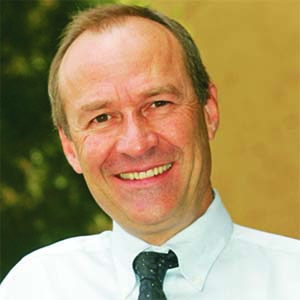Formula One faced its biggest shakeup in many decades when US TV giant Liberty Media took control in early 2017, in a deal said to be worth around $8-billion.
 By Graham Duxbury
By Graham Duxbury
The company quickly installed former 21st Century Fox executive Chase Carey as chairman and chief executive of the Formula One Group which is responsible for the sport’s promotion and exploitation of its commercial rights.
Just as rapidly, it orchestrated the exit of long-time F1 supermo, 85-year-old Bernie Ecclestone, who was given an inflated and meaningless title of chairman emeritus, which effectively removed him from all decision-making processes.
Ecclestone’s former job was divided into three, with Carey being joined by former ESPN executive Sean Bratches in a commercial (read sponsor-hunting) role, and Ross Brawn in the unfamiliar and newly-created position of MD of motorsports.
Brawn is well known for his stints at Benetton and Ferrari where he worked alongside Michael Schumacher, guiding him to an unprecedented seven world championship wins. Now, Brawn is tasked with overseeing F1’s evolving technical regulations ahead of major rule changes scheduled for 2021.
On paper then, F1’s new management team appears formidable. But after nearly a year in business, how is it performing?
It’s no secret that Carey and his team are faced with a number of stubborn obstacles in their bid to (as he says) “help F1 develop and prosper for the benefit of the sport, fans, teams and investors alike”.
Nevertheless, the first fruits of Liberty’s ownership have come in the form of a remarkable change in the nature of F1’s relationship with its fans. F1 is today closer to its fan base than ever thanks in part to the new Fan Zone.
To be a feature at all 2018 races, it includes F1 driving simulators, a zip line, pitstop challenges and opportunities for fans to win passes into the pits and take part in photo opportunities with their favourite drivers and teams.
The razzmatazz that accompanied the pre-race grid ceremony at the US Grand Prix in Austin this year is evidence that Liberty is thinking “out of the box” when it comes to fan entertainment.
In this light, music festivals regularly support the races, giving Liberty the opportunity to introduce fans’ favourite celebrities to pre-race grids.
In 2017 we saw a slew of ‘A-listers’ grace F1 with their presence, including Justin Bieber, Mariah Carey, Chris Hemsworth, Owen Wilson, Pamela Anderson, Kate Upton, Justin Timberlake, Ashton Kutcher and Venus Williams.
Undoubtedly, Liberty needs to prioritise the “sport” and make competition on the track more exciting and engaging. This means giving lesser teams the chance to compete with the three front-running outfits on a more equal footing.
To achieve this, costs have to come down. The big teams are spending upwards of $500-million a year, while the “minnows” at the back of the grid rely on $150-million or less.
The first steps towards this goal have come with Liberty’s recent proposal for F1’s new engine regulations for 2021. The regulations, according to Carey, “represent the cornerstone of it all”.
While the proposals might fall short of the ultimate “Christmas bonanza” for the sceptics – who had hoped for a return to the halcyon days of naturally aspirated V8 or V10 engines – there are elements designed to appeal to all sectors.
For the fans, the proposal outlines engines – based on the current V6 turbo architecture – that are higher revving and thus louder and more emotive. The teams should be pleased by suggestions designed to lower costs by limiting complexity and incorporating many standardised parts and components.
The 2021 regulations are aimed at creating conditions that encourage new manufacturers to enter F1 as powertrain suppliers, emphasises Brawn.
Liberty’s intent is clear: Its immediate goal is to define sporting and technical regulations that will promote competition between all teams. Of no less importance are imminent plans to introduce financial controls that ensure those with the biggest budgets do not dominate F1 in future.
“We want a proper meritocracy – we want the best teams to win in F1,” Brawn is reported to have said.
Together with many F1 insiders, I believe Carey’s emphasis on attracting and entertaining fans has been an indication of his team’s immense potential for success in other areas.
The proposed engine regulations are only the beginning – the tip of the iceberg. We will surely see more advances in the coming year as Carey makes good on his promise to “make the sport everything it can and should be”.
